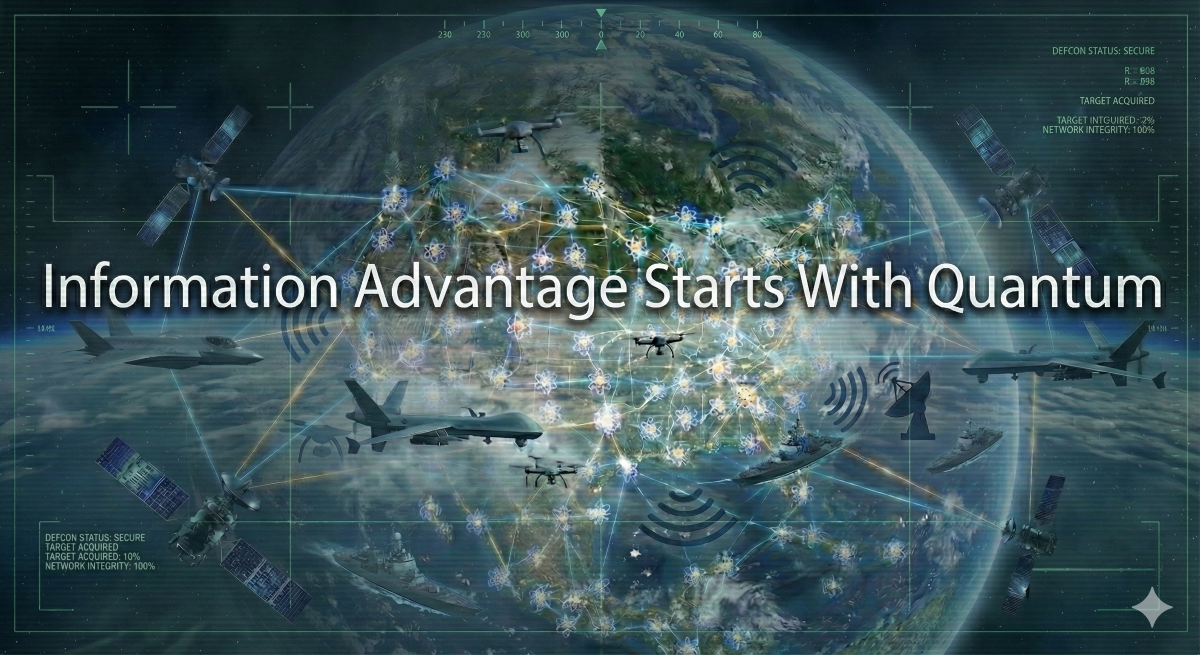America’s Quantum Moment Has Arrived, and We Must Move Faster
The recent statement from Emil Michael, the Under Secretary of War for Research and Engineering, is a defining moment for American technological, defense, and quantum leadership. His identification of quantum within the Critical Technology Areas reflects a broader shift in modern conflict: securing and protecting the information layer now underpins every mission. Quantum and Battlefield Information Dominance (Q-BID) rightly places quantum at the center of that modernization strategy.
The War Department’s new framework recognizes that legacy systems were built for an era when U.S. forces could operate with little interference.
That era is over. Our adversaries are developing and fielding capabilities such as precision jamming, spoofing, counterspace systems, and advanced spectrum tools specifically designed to blind, disrupt, and fracture U.S. forces. Conflicts in the near future will not resemble those of 20, 10, or even 5 years ago. The United States cannot rely on legacy systems that depend on fragile signals, predictable infrastructure, or vulnerable spectrum. We need systems built for contested environments, not legacy architecture designed for uncontested ones.
Quantum is a key breakthrough capability that can strengthen information dominance and ensure the overmatch our forces depend on in contested environments.
That is why the War Department’s emphasis on acceleration resonates so deeply with me. The warfighter needs new technologies now. Acceleration is not optional; it is the only way to ensure quantum capabilities reach the warfighter at the pace the mission demands.
Quantum Is Now Central to Mission Success
The declaration highlights a reality that the national security community increasingly recognizes: quantum-enabled information dominance is now essential to mission success. Quantum and information technologies are fundamental to achieving and maintaining Q-BID.
Whether it is resilient timing when GPS is denied, electromagnetic awareness across the spectrum, precise visibility into what is happening on or below the ground, or secure, jam-resistant synchronization, quantum gives American forces the tools to maneuver, coordinate, and survive when adversaries are doing everything possible to blind them.
At Infleqtion, we have spent years designing, engineering, and hardening quantum systems specifically for national security missions. Our teams have fielded quantum timing systems, demonstrated quantum RF sensing in operational settings, and deployed quantum technology in space. These are not theoretical concepts; they are operational technologies with real users, missions, and impact.
Building the Quantum Ecosystem the Warfighter Needs
To fully realize the Department’s vision, we need a new model of partnership that moves beyond research and into fielded capability. The United States has no shortage of ideas; we need an ecosystem that rewards fast experimentation, accelerates procurement, and can transition successful prototypes into fielded capability. Quantum technologies are proving mission relevance. The applications are clear, and what we must accelerate now is the path from prototype to program.
America’s Leadership in Quantum Is Within Reach
America is closer than ever to true quantum leadership. Our physicists, engineers, and industry builders have created extraordinary momentum, and turning that momentum into mission-ready capability is the task in front of us. This is a mission we are equipped to lead and ready to accelerate.
The War Department’s declaration is a call to action. It recognizes that information dominance is inseparable from technological dominance and that quantum is one of the most consequential tools we can give the warfighter.
Our Mission and Commitment
At Infleqtion, our mission is simple: bring quantum to the mission in ways that benefit the U.S. and our allies, and strengthen our technological, military, and economic advantage. We are proud to support the Department of War’s vision, we are aligned with its urgency, and we stand ready to deliver. The stakes could not be higher, and neither could the opportunity.

